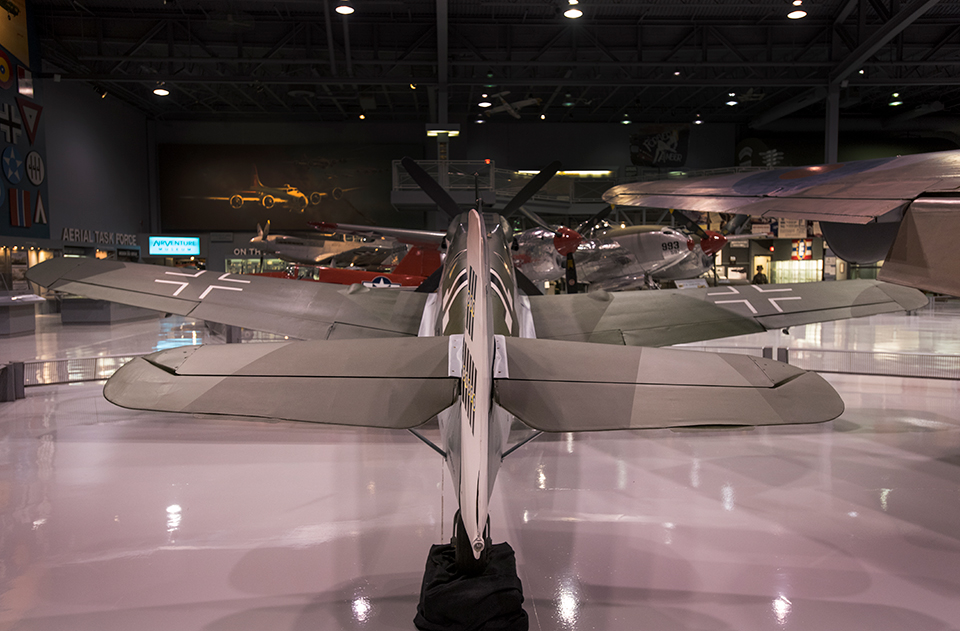Messerschmitt/Hispano Buchon HA1112-M1L - N109BF
Location: Eagle Hangar
The HA-1112-M1L Buchón is a descendant of the German Messerschmitt Me 109G, built under license by Hispano Aviación in Seville, Spain. The most significant difference between the two is that the Spanish version was fitted with a Rolls Royce Merlin 500-45 engine instead of the unavailable Daimler-Benz 605A-1 engine used in the original German aircraft.
The Messerschmitt Bf 109 first appeared in 1935 and became one of the best fighters in the world. At a time when biplane fighters were still predominant, it gave Germany a significant lead in military aviation. The Bf designation stands for Bayerische Flugzeugwerke or Bavarian Aircraft Works, which was the factory name before chief designer Willie Messerschmitt took over and renamed the company.
The Messerschmitt became the standard Luftwaffe single seat fighter for nearly a decade and its active service career in other countries spanned nearly a quarter of a century. The Bf 109/Me 109 was improved and strengthened throughout its career and more than 34,000 were built. These 34,000 airplanes accounted for more victories than any other aircraft in World War II.
Spain operated the type longer than any other country beginning in March of 1937 when the Spanish Nationalist Air Force took delivery of their first Bf 109. From 1937 to 1945 Spain accumulated about 100 Bf-109s of various types. After the war ended, Hispano continued development of the type, culminating with the Merlin-powered HA-1112-M1L, which first flew in 1954. Named Buchón, after a Spanish dove, 172 were built, and saw service with the Ejército del Aire (Spanish Air Force) until they were finally retired in 1965.
With only 92 hours of flying time, the museum’s Buchón saw most of its “combat” in the classic 1969 film, Battle of Britain, considered by many to be one of the finest aviation films of all time. It was one of 27 “Messerschmitts” that were used to play the part of the German Luftwaffe’s fighter force, recreating the fierce air battles of 30 years before.
After the film, aerial coordinator Wilson “Connie” Edwards acquired several of the screen-used aircraft, including a Spitfire, a Mustang, and a number of Buchóns, one of which he donated to the EAA museum in 1979. At the time of donation, the airplane was in pieces in a crate. In a joint effort, Edwards and the museum staff restored the airplane and painted it in fictitious German markings for display.
Length: 29 feet, 10 inches
Wingspan: 32 feet, 7 inches
Empty Weight: 5,390 pounds
Gross Weight: 6,300 pounds
Cruise Speed: 376 mph
Maximum Speed: 414 mph
Crew: 1
Maximum Range: 405 miles
Powerplant: Rolls Royce Merlin 500-45
Horsepower: 1,600 hp
Armament: Two 20 mm wing mounted cannons, eight 22-pound rockets










